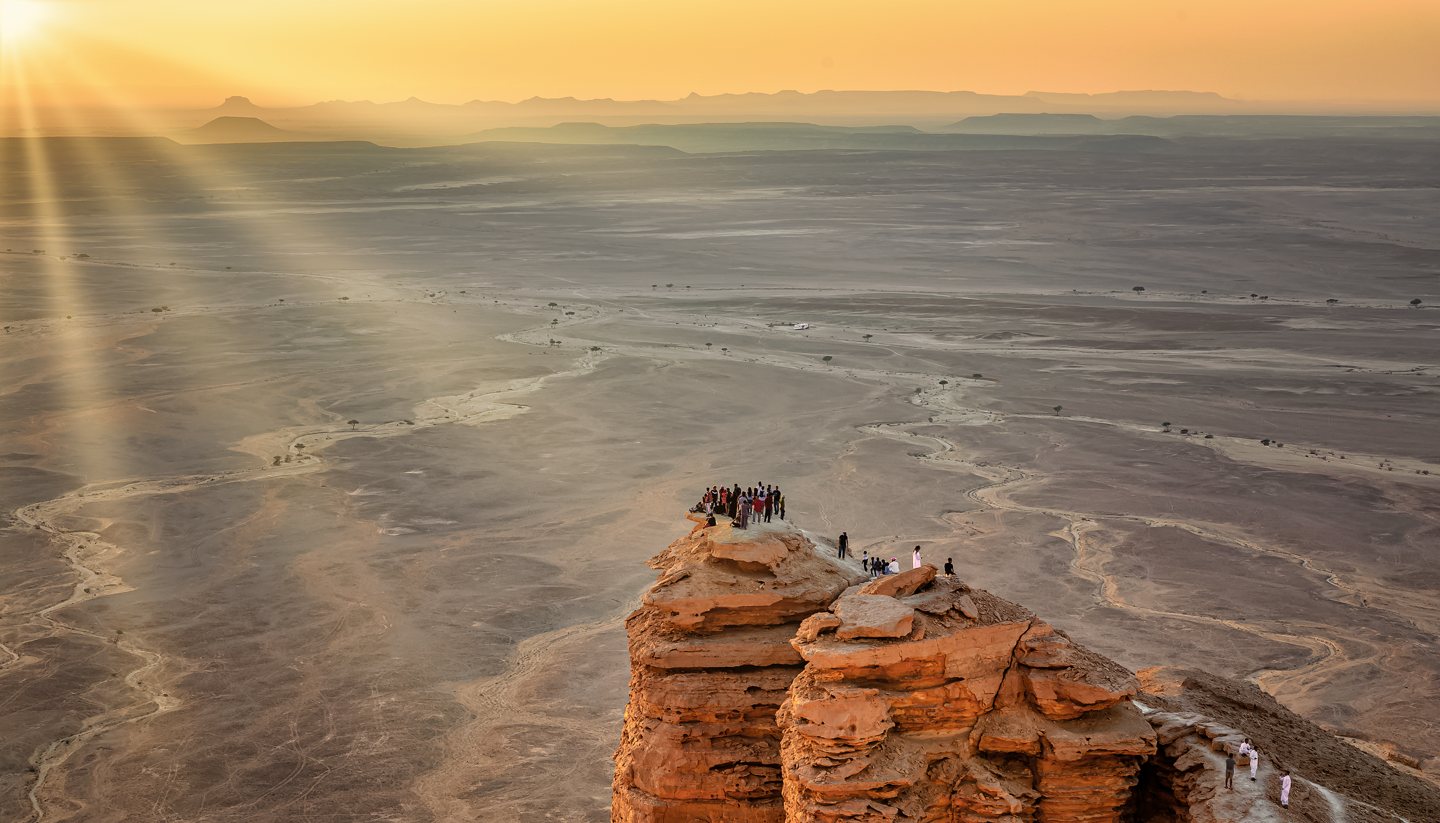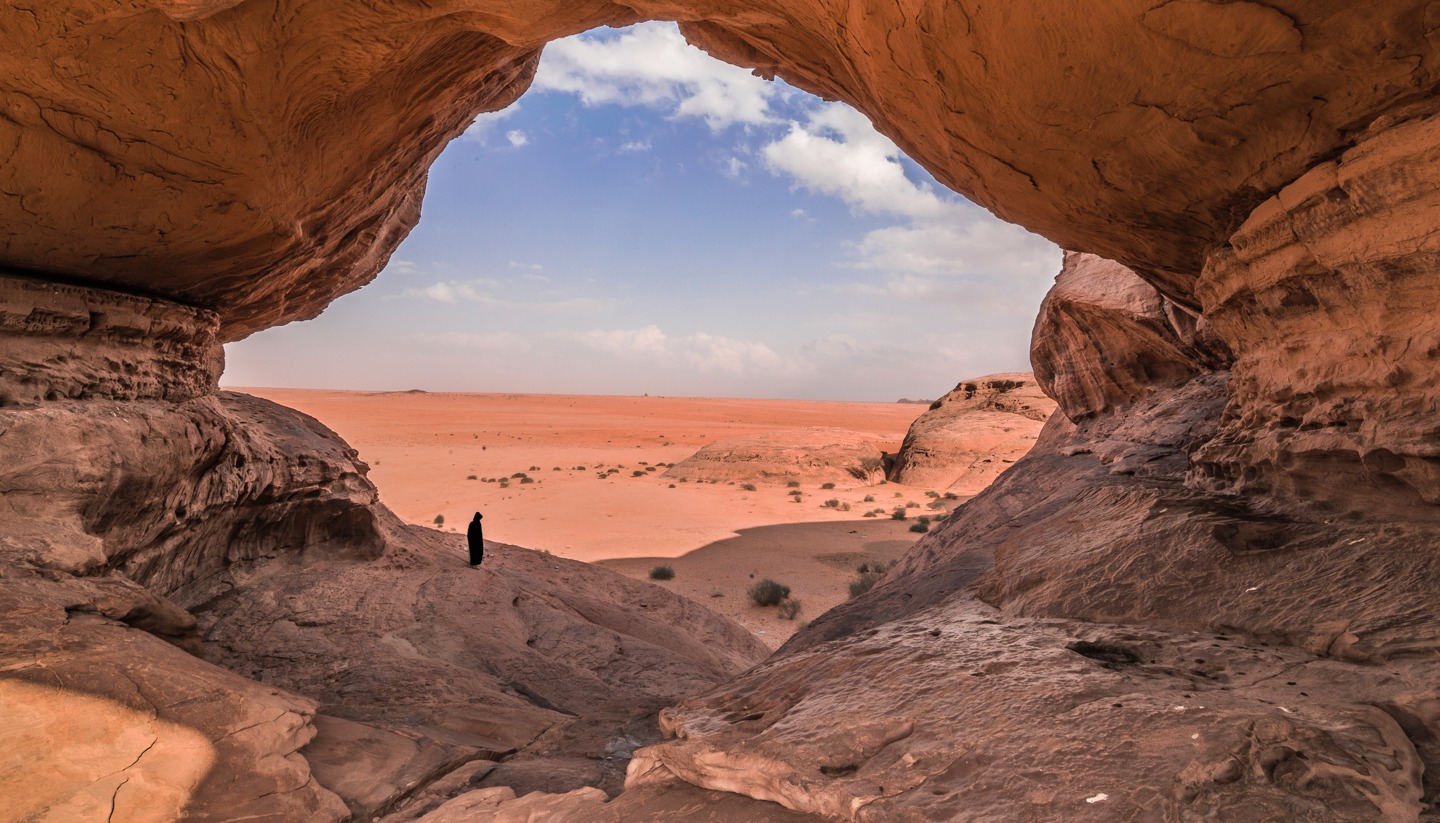Things to see and do in Saudi Arabia
Attractions in Saudi Arabia
AlUla (Al-Ula)
The city of AlUla is perhaps Saudi's best-kept secret, but it won't be for long. The landscape is stunning – expect everything from unique rock formations in the desert to pre-Arabic rock inscriptions and palm-shaded oases. Another must-see is the Hegra Archaeological Site, the Kingdom's first UNESCO World Heritage Site, which dates back to the 1st-century BCE when the Nabataean civilisation flourished in the region.
Farasan Islands
An archipelago off the coast of Jazan in southwest Saudi Arabia, Farasan excites visitors with pristine beaches, colourful coral reefs, carbon-capturing mangroves and high diversity of marine life. This wildlife sanctuary is definitely one for divers, swimmers, snorkelers, marine biologists and wildlife enthusiasts to explore.
Jebel Fihrayn (the Edge of the World)
The nickname of Jebel Fihrayn is the Edge of the World, and you instantly understand why when you climb to the top of the massive cliffs and enjoy panoramic vistas of dried rivers meandering through the land and rocky desert shimmering in the distance. This geological wonder is located 99km (62mi) northwest of Riyadh.
Jeddah
A vibrant port city on the Red Sea coast, Jeddah has long been the gateway for pilgrims travelling to Makkah but the city never stops to reinvent itself. Jeddah remains uniquely different from other Saudi cities, setting trends with museums, art galleries, outdoor gyms, and now the longest F1 street circuit snaking along the glorious coastline. King Fahd's Fountain, the world's tallest, is another must-see sight.
Makkah (Mecca)
The Holy City of Makkah, only accessible to Muslims, is packed with sacred sites, including the Ka'aba, a cuboid-shaped shrine in the heart of the Grand Mosque (Masjid al-Haram), the historic Cave of Thawr where Prophet Muhammad once sought refuge from an attacking tribe, and Jabal Rahmah, where the Prophet delivered his last sermon.
Riyadh
Riyadh, Saudi Arabia's capital, is sure to surprise and delight travellers. Its gleaming skyscrapers contrast with labyrinthine souqs, offering a fitting backdrop to a progressive city that is also deeply rooted in culture and tradition. Visitors can trace the city's history at Al Masmak Fortress and Diriyah – the latter's mud-brick walls once encircled a thriving ancient settlement.
The Al-Jouf (Al-Jawf) Province
Located near the Saudi-Jordanian border, Al-Jouf greets visitors with a sea of olive trees – this place is home to the largest olive farm in the world and celebrates an Olive Festival every January. Away from the evergreen shrubs, Al-Jouf offers spectacular ancient castles and Rajajil, a burial site featuring more than 50 standing stones carved from ochre sandstone thousands of years ago.
The Asir (Aseer) Province
Nestled in the southwestern corner, the Asir region boasts lofty mountains, winding valleys, ancient villages, and a vast protected area known as Asir National Park, which undoubtedly is the jewel in the crown here. The region is crisscrossed with hiking trails and campsites. For an extraordinary experience, take a cable car to the 400-year-old Hanging Village of Al Habala, built on the ledge of a cliff by the Qahtan tribe.
The Incense Route
The Incense Route is a network of paths connecting southern Arabia to the Mediterranean by skirting along the Red Sea coast. The caravan merchants carrying myrrh and frankincense may have long gone, but intrepid visitors today can drive a stretch of the Incense Route from Abha in the south to Tabuk in the north, passing through ancient villages such as Al Habala, Zee Ain, Al Balad, AlUla, Hegra, and Dadan.



